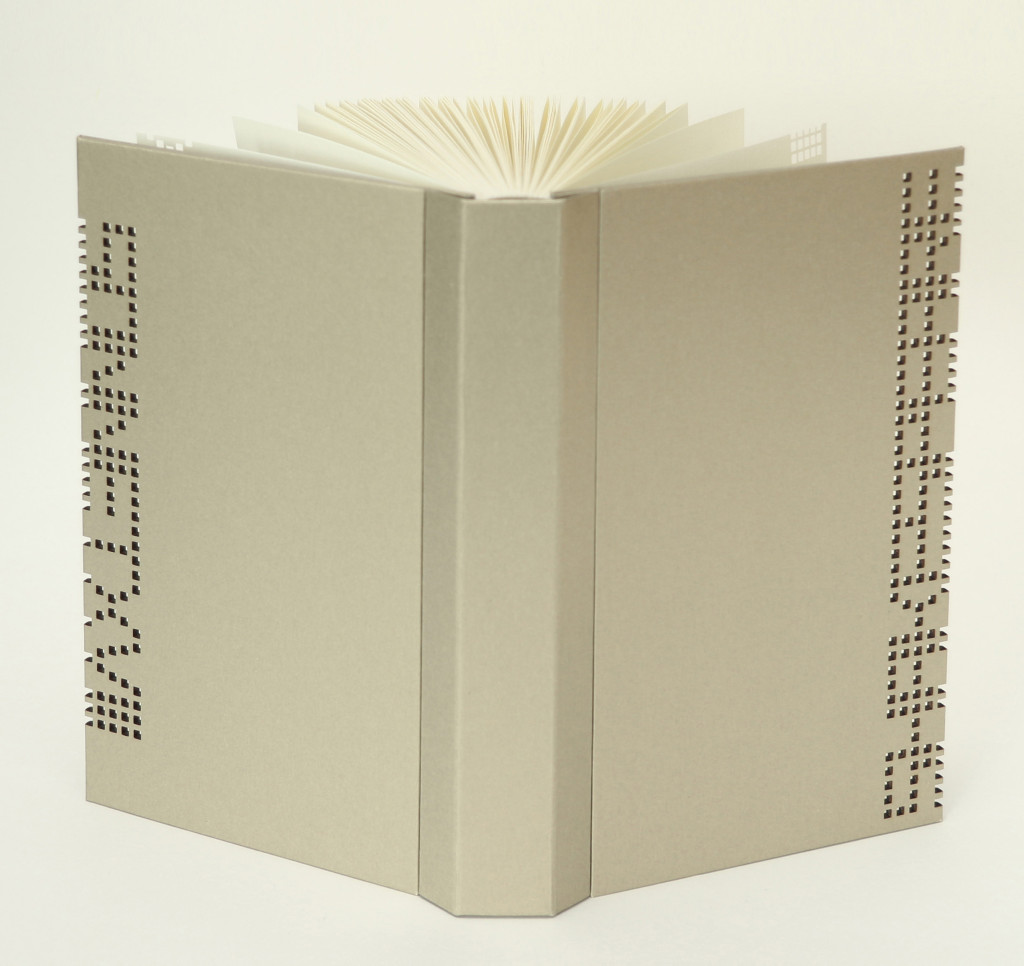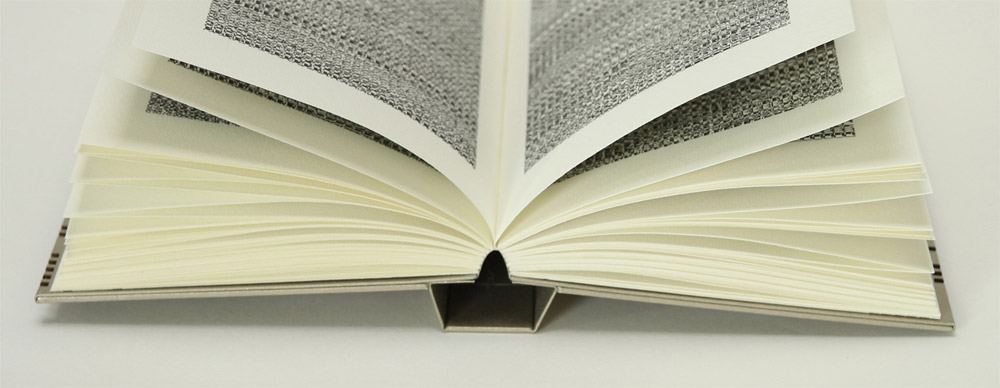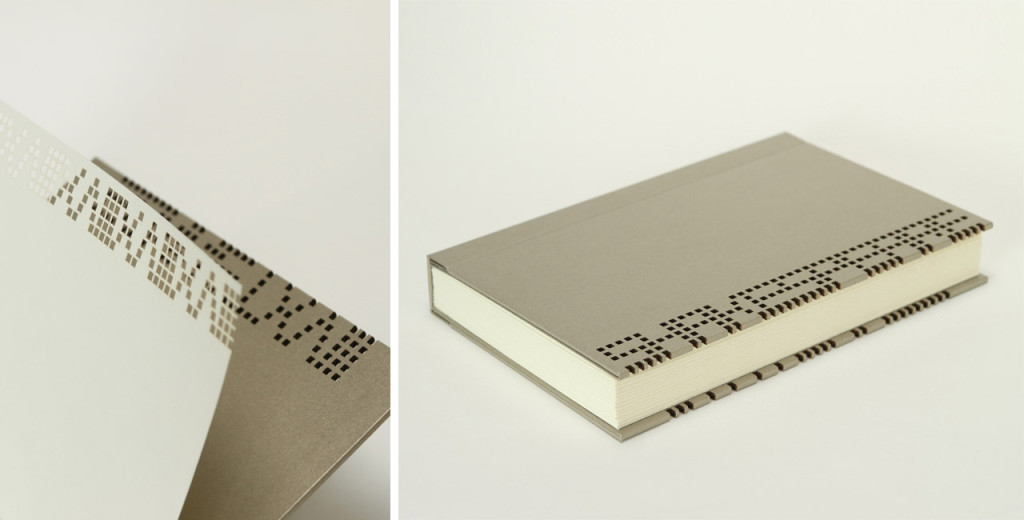In Sonnet XVII, Dutch bookbinder Marja Wilgenkamp has reimagined Shakespeare by using a process developed by the artist collective La Société Anonyme. The sonnet was initially read out aloud and recorded, which was then encoded into binary code. The code was then printed making it potentially accessible to the future.
Offset printed in an edition of 65 copies on Hahnemuhle Ingres paper, the book is still available for purchase here.
Ben Elbel executed the binding according to Marja’s design. The binding is covered in So Silk paper. The text has been laser cut into the cover boards and flyleaves; inspiration for the design came from costuming seen during Shakespeare’s time.
‘Dos Rapporte’ is another structure that you’ve developed and is the style of binding you used on Sonnet XVIII, a collaborative project between you and Marja Wilgenkamp. Can you talk about its design and function and why you chose to use it on this project?
There have been many efforts in recent years to improve the opening of books and the dos rapporte is my own personal contribution to the subject. In a few words let’s say it is a mixture of a type of industrial brochure as practiced by (among others) the dutch company Hexspoor + Gary Frost’s sewn board binding + the old fashioned springback binding. What is special about my design is that the spine is made separately from the book (this is what ‘dos rapporté’ refers to) and is attached by gluing its inner part, the one that folds back on itself, onto the boards. This makes for a very fluid opening action as well as an interesting profile and a very clean hinge on the outside.
We thought that the strict character of the structure would work well with the laser cut pattern that Marja designed for this edition.



